
Thermoformed packaging1, a process where plastic sheets are heated and molded into specific shapes, is gaining attention as an eco-friendly solution in today’s push for sustainability. With growing concerns about waste, energy use, and carbon footprints, industries are seeking packaging that balances functionality with environmental responsibility. This article explores why thermoformed packaging stands out as a greener choice, diving into its sustainability benefits2, applications, technical details, and future potential.
Thermoformed packaging, made by heating and shaping plastic sheets, is often touted for its environmental benefits due to geri dönüştürülebilirlik3, reduced waste, and energy efficiency, making it a sustainable choice for industries like food, pharmaceuticals, and electronics.
Understanding how thermoformed packaging works and its environmental advantages can help businesses and consumers make informed choices. Let’s explore its edge over other methods and how it fits into the broader sustainability puzzle.
Thermoformed packaging reduces material waste compared to other methods.Doğru
The precise shaping process minimizes scrap, leading to less waste during production.
Thermoformed packaging is only used in the food industry.Yanlış
While common in food packaging, it’s also widely used in pharmaceuticals, electronics, and retail due to its versatility.
- 1. What is Thermoformed Packaging and How Does It Work?
- 2. What are the Environmental Benefits of Thermoformed Packaging?
- 3. How Does Thermoformed Packaging Compare to Other Packaging Methods?
- 4. What Materials are Used in Thermoformed Packaging and Their Environmental Impact?
- 5. Termoform Sürecindeki Adımlar Nelerdir?
- 6. How Can Businesses Implement Thermoformed Packaging Sustainably?
- 7. What are the Future Trends in Thermoformed Packaging?
- 8. Sonuç
What is Thermoformed Packaging and How Does It Work?
Thermoformed packaging involves heating plastic sheets until they’re pliable, then shaping them over molds using vacuum, pressure, or mechanical force. The result? Lightweight, durable, and customizable packaging that’s widely used across industries.

Thermoformed packaging heats plastic sheets and molds them into shapes, offering a versatile, cost-effective solution for industries like food, pharmaceuticals, and electronics.
| Aspect | Açıklama |
|---|---|
| Süreç | Heating plastic sheets to a pliable state, then forming them over molds using vacuum or pressure. |
| Malzemeler | Commonly uses PET, PP, PVC, and PS, each with unique properties affecting recyclability and durability4. |
| Uygulamalar | Used in food trays, blister packs, clamshells, and retail packaging for protection and visibility. |
Definition and Basic Principles
At its core, thermoforming transforms flat thermoplastic sheets—think polyethylene terephthalate (PET), polypropylene (PP), polyvinyl chloride (PVC), or polystyrene (PS)—into three-dimensional packaging. The process heats the plastic to a flexible state, molds it, and cools it to set the shape. It’s efficient, producing minimal waste thanks to its precision.

Sınıflandırma
-
Süreç Tarafından: Vacuum forming (simple, cost-effective), pressure forming (detailed finishes), and plug assist forming (deeper shapes).
-
Malzemeler Tarafından: PET (clear, recyclable), PP (durable, heat-resistant), PVC (strong but less eco-friendly), and PS (affordable, less recyclable).
-
Uygulamalar tarafından: Food (trays, containers), pharmaceuticals (blister packs), electronics (protective clamshells), and retail (display packaging).
This versatility makes it adaptable to various needs while influencing its environmental footprint based on material choice.
Thermoformed packaging is highly customizable.Doğru
The process allows for a wide range of shapes and sizes, tailored to specific product needs.
All thermoformed packaging materials are equally eco-friendly.Yanlış
Materials like PET and PP are recyclable, while PVC and PS have lower recyclability, impacting their environmental footprint.
What are the Environmental Benefits of Thermoformed Packaging?
Thermoformed packaging shines when it comes to sustainability. Its design and production process offer several green advantages over traditional packaging methods.
Thermoformed packaging reduces waste, uses less energy, and supports recyclability, making it a sustainable choice for various industries.
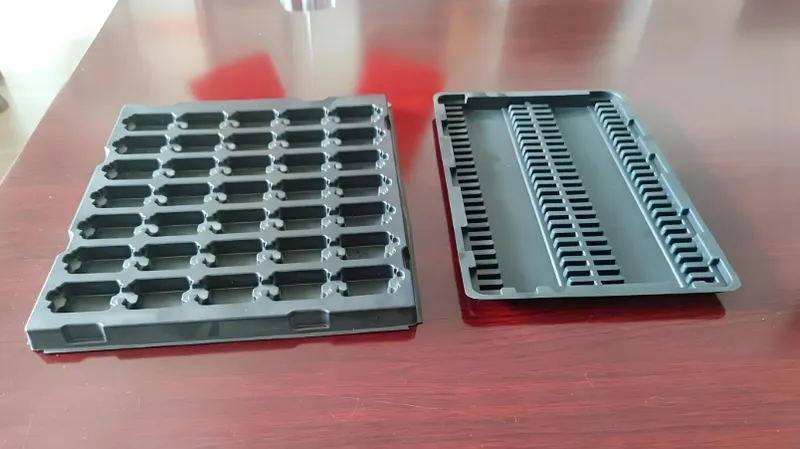
Minimal Waste Generation
The precision of thermoforming cuts down on scrap material, unlike methods like injection molding that often leave excess. Advanced Plastiform highlights this efficiency as a key benefit.
Geri Dönüştürülebilirlik
Materials like PET and PP, commonly used in thermoforming, can be recycled into new products, supporting a circular economy. This aligns with findings from general industry insights, even when specific sources like Clear-Pak Australia aren’t accessible.

Enerji Verimliliği
Thermoforming uses less energy than alternatives, thanks to shorter heating cycles and lower temperatures. Nefab notes this as a factor in reducing its carbon footprint.
Material Selection for Sustainability
Options like recycled plastics or biodegradable alternatives enhance its eco-profile, giving businesses flexibility to prioritize sustainability.

Reduced Carbon Footprint
Less waste, recyclable materials, and energy savings combine to lower emissions, making it a climate-friendly choice.
Consumer Preference
With over 52% of consumers favoring eco-friendly packaging (per general industry trends), thermoformed options meet this demand when designed sustainably.
Thermoformed packaging always uses less energy than other methods.Doğru
The process is generally more energy-efficient due to lower heating requirements and faster production cycles.
All thermoformed packaging is recyclable.Yanlış
Recyclability depends on the material; PET and PP are recyclable, while PVC and PS are less so.
How Does Thermoformed Packaging Compare to Other Packaging Methods?
To see why thermoformed packaging is a green contender, let’s stack it up against injection molding and blow molding.
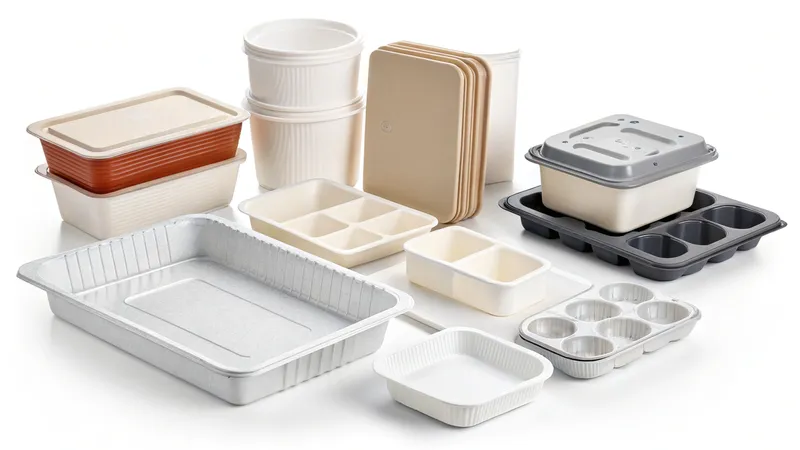
Thermoformed packaging offers superior customization5, reduced waste, and enerji̇ veri̇mli̇li̇ği̇6 compared to injection molding and blow molding, but may have limitations in strength and material choices.
| Karşılaştırma Unsuru | Termoform Ambalaj | Enjeksiyon Kalıplama | Şişirme Kalıplama |
|---|---|---|---|
| Malzeme Atıkları | Minimal due to precise shaping | Yolluklar ve yolluklar nedeniyle daha yüksek | Moderate, with some scrap |
| Enerji Kullanımı | Lower, faster production cycles | Higher, longer cooling times | Moderate, varies by complexity |
| Özelleştirme | High, easily adaptable molds | Moderate, molds are more expensive | Low, limited to hollow shapes |
| Güç | Moderate, suitable for most uses | High, for heavy-duty applications | Moderate, depends on design |
| Geri Dönüştürülebilirlik | Varies by material (PET, PP good) | Varies, often recyclable | Varies, often recyclable |
Pros of Thermoformed Packaging
- Highly customizable: Quick mold changes for unique designs.

-
Cost-effective: Lower tooling costs for small to medium runs.
-
Hafif: Cuts shipping emissions.
-
Recyclable options: PET and PP lead the way.
-
Protection and visibility: Great for retail and food.
Cons of Thermoformed Packaging
- Plastic reliance: Environmental impact if not recycled.
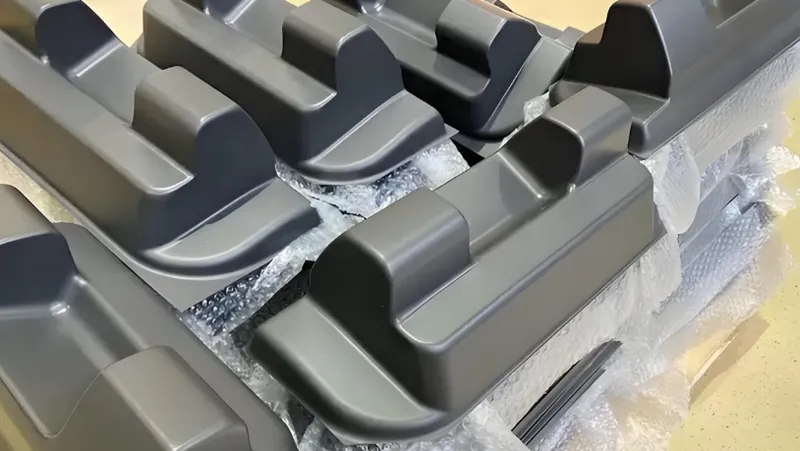
-
Not ideal for heavy items: Less robust than injection molding.
-
Tooling costs: Can add up for complex designs.
This comparison shows its edge in sustainability and flexibility, though it’s not a one-size-fits-all solution.
Thermoformed packaging is always cheaper than other methods.Yanlış
While often cost-effective, initial tooling costs can be high for complex designs.
Thermoformed packaging offers better customization than injection molding.Doğru
Thermoforming allows for quicker and cheaper mold changes, enhancing customization.
What Materials are Used in Thermoformed Packaging and Their Environmental Impact?
Material choice is a game-changer for thermoformed packaging’s eco-friendliness. Here’s a look at the big players.
Common materials include PET, PP, PVC, and PS, each with varying degrees of recyclability and environmental impact.
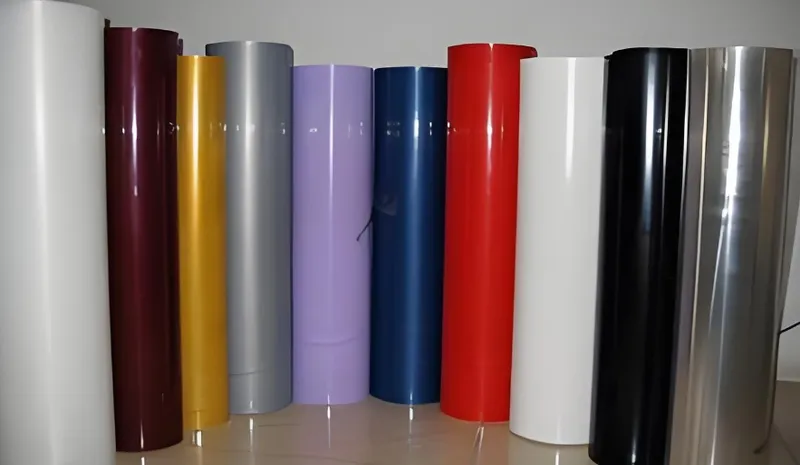
Polietilen Tereftalat (PET)
PET is a star for its clarity, strength, and recyclability. It’s widely recycled into new packaging or textiles, making it a green favorite.
Polipropilen (PP)
PP brings durability and heat resistance, plus recyclability. It’s a solid pick for food packaging and reusable products.

Polivinil Klorür (PVC)
PVC is tough but less sustainable due to its chlorine content and limited recycling options. It’s common in blister packs but trickier to dispose of responsibly.
Polistiren (PS)
PS is cheap and easy to form but lags in recyclability, often ending up as waste. It’s used in disposable items, posing environmental challenges.
PET is the most environmentally friendly material for thermoformed packaging.Doğru
PET is highly recyclable and widely accepted in recycling programs, reducing its environmental impact.
All thermoformed packaging materials are biodegradable.Yanlış
Most materials, like PET and PP, are recyclable but not biodegradable; biodegradable options are limited.
Termoform Sürecindeki Adımlar Nelerdir?
The magic of thermoforming happens in a few key steps, turning flat sheets into functional packaging.
The thermoforming process involves heating, forming, cooling, trimming, and finishing plastic sheets to create custom packaging shapes.
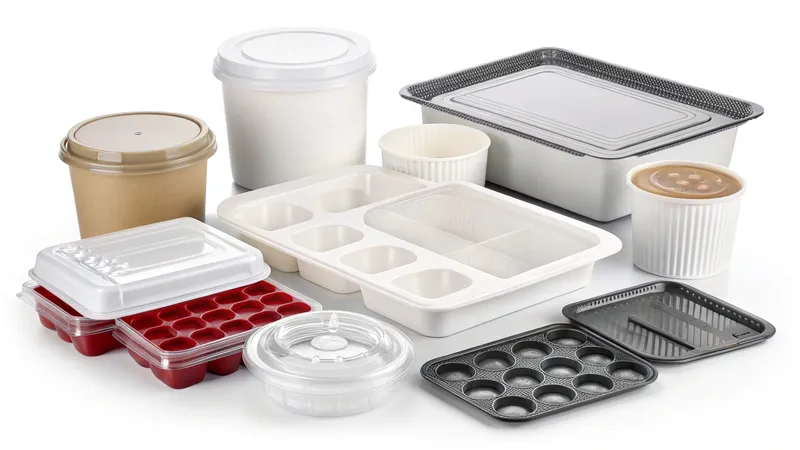
Isıtma
Plastic sheets are warmed (typically 140°C–190°C) until pliable, prepping them for molding.
Şekillendirme
The soft sheet is shaped over a mold using vacuum, pressure, or mechanical force.

Soğutma
Rapid cooling locks in the shape and strengthens the structure.
Kırpma
Excess plastic is cut away for a clean, final product.
Bitirme
Extras like printing or sealing complete the package.
The forming step is the most critical in thermoforming.Doğru
Proper forming ensures the packaging meets design specifications and functional requirements.
Thermoforming always requires high temperatures.Yanlış
Temperature varies by material; some form at lower ranges.
How Can Businesses Implement Thermoformed Packaging Sustainably?
Going green with thermoformed packaging means smart planning. Here’s how businesses can do it right.
Businesses can implement thermoformed packaging sustainably by choosing recyclable materials, optimizing designs for minimal waste, and ensuring proper recycling infrastructure.
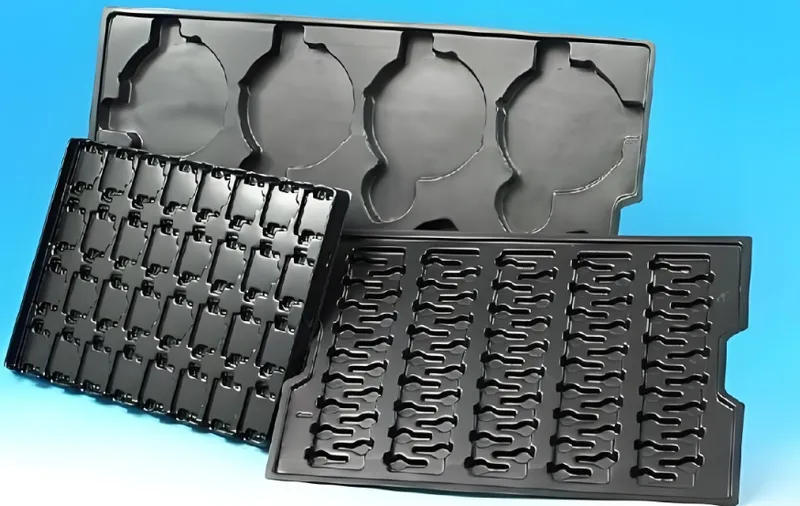
Design Checklist for Sustainable Thermoformed Packaging
-
Malzeme Seçimi: Opt for PET or PP over PVC or PS.
-
Design for Recyclability: Keep it simple for recycling streams.
-
Minimize Material: Use just enough to get the job done.
-
Consumer Education: Add recycling instructions.
-
Mevzuata Uygunluk: Follow local packaging laws.
Süreç Seçimi Karar Verme
Bir düşünün:

-
Product Needs: Shape, protection level.
-
Cilt: Best for short to medium runs.
-
Material Goals: Align with sustainability targets.
-
Maliyet Karşılaştırması: Weigh against alternatives.
Using recycled materials in thermoforming reduces environmental impact.Doğru
Recycled content cuts virgin material use, lowering resource demand.
Thermoformed packaging is always the most sustainable option.Yanlış
Sustainability hinges on material, design, and disposal; other methods may suit specific needs better.
What are the Future Trends in Thermoformed Packaging?
The future looks bright—and green—for thermoformed packaging, with innovations on the horizon.
Future trends include biodegradable materials7, increased recycled content8ve advanced recycling technologies9.

Biodegradable Materials
Research is pushing for thermoformable biodegradable plastics to cut long-term waste.
Increased Use of Recycled Content
More companies are using recycled plastics, boosting circularity.
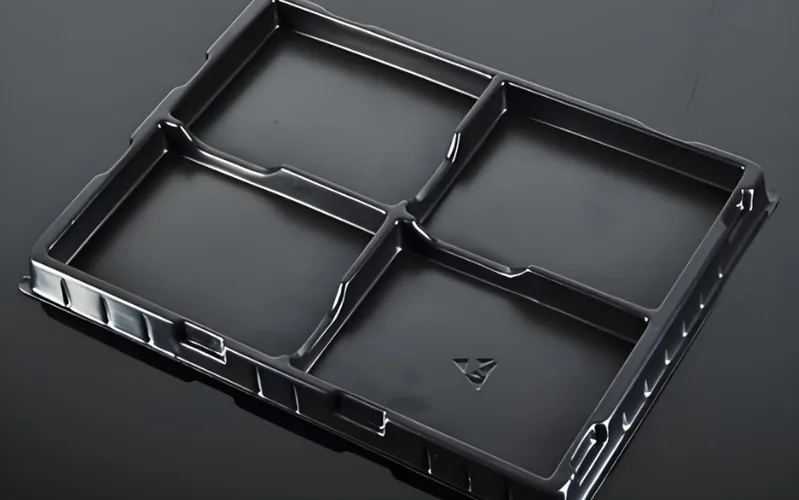
Advanced Recycling Technologies
Chemical recycling and better sorting are making thermoformed packaging more recyclable.
Smart Packaging
Features like QR codes could enhance traceability and consumer engagement.
Biodegradable thermoformed packaging will replace traditional plastics.Yanlış
It’s promising but not yet a full replacement due to performance gaps.
Recycled content in thermoformed packaging is becoming more common.Doğru
Companies are adopting it to meet sustainability goals and consumer demand.
Sonuç
Thermoformed packaging stands out as an environmentally better option thanks to its recyclability, minimal waste, and energy efficiency. While its green credentials depend on material choices and recycling efforts, it offers a compelling case for businesses aiming to reduce their ecological footprint. By leveraging its benefits and addressing its limitations, thermoformed packaging can play a key role in the shift toward sustainable solutions.
-
Explore the environmental benefits of Thermoformed packaging to understand its role in sustainability and waste reduction. ↩
-
Discover the sustainability benefits of Thermoformed packaging and how it contributes to eco-friendly practices in various industries. ↩
-
Learn about the recyclability of Thermoformed packaging and its significance in reducing waste and promoting sustainability. ↩
-
Discover how the recyclability and durability of materials impact packaging choices and sustainability efforts. ↩
-
Discover the unique customization benefits of thermoformed packaging, making it a versatile choice for various industries. ↩
-
Learn how thermoformed packaging's energy efficiency stacks up against other manufacturing methods, highlighting its sustainability benefits. ↩
-
Explore this link to discover cutting-edge biodegradable materials that are shaping the future of sustainable packaging. ↩
-
Learn how the rise of recycled content is transforming the packaging landscape and promoting sustainability. ↩
-
Find out about the latest recycling technologies that are making packaging more sustainable and efficient. ↩








